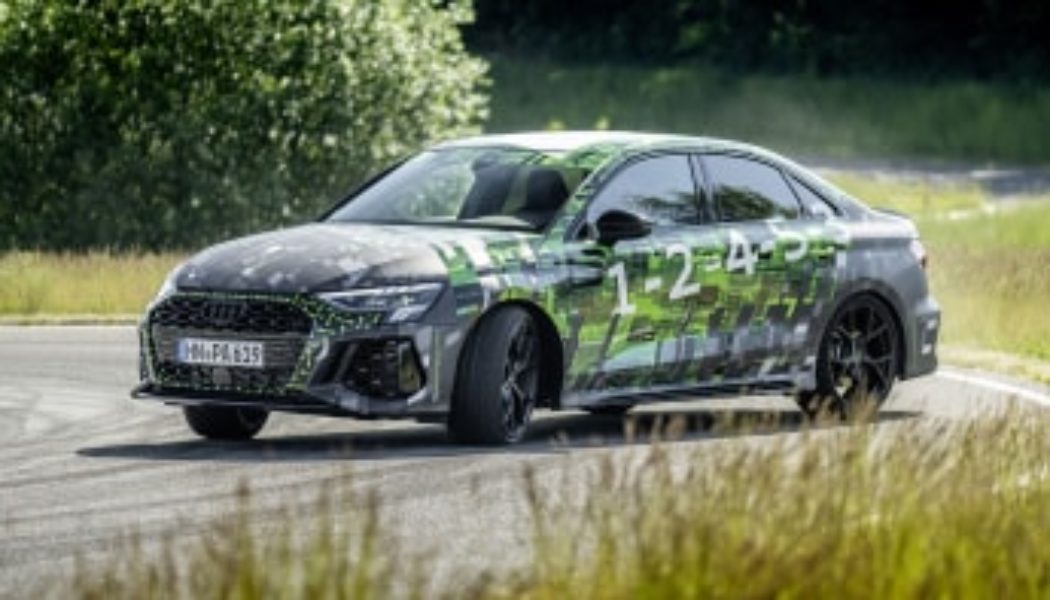There is a lot to like about the current Audi RS3, which was introduced for the 2017 model year—in particular, the small sport sedan’s rear-biased, clearly performance-oriented Haldex all-wheel-drive system. But if there’s anything the Germans are good at, it’s improving upon the already damn good. Hence, Audi has developed the system further for the next-generation model, giving it true torque vectoring across the rear axle.
Audi calls the new twin-clutch system the RS Torque Splitter—and it does just that. Rather than use a single clutch pack ahead of the rear differential and brake-based torque vectoring system, the RS Torque Splitter actively apportions torque from side to side, increasing torque to the outer rear wheel through corners. This system should be more effective than the previous setup in tamping down understeer—and it can also help compensate for oversteer by sending power to the inner wheel. (And yes, it’s a bit like the so-called Twinster unit that Ford used on the now-defunct Focus RS.)
Can the new RS3 drift? You’re darn right it can. Set up correctly (on a closed course and all that), it’ll send all the power to one rear wheel, enabling long, smoky, and likely controllable drifts to your heart’s content (or your tires’ failure point). We’ll of course have to test this out. Thoroughly. If you see an RS3 sending up a massive could of tire smoke at Fontana’s Auto Club Speedway, that’s us, just making sure it, uh, all works properly.
The RS3’s twin-clutch system is new, but the engine is not, confirming a not-so-subtle detail on the car’s camo wrap we saw earlier. That’s not as much of a bummer as it sounds, since the turbocharged I-5 is fantastically funky (and a real nod to the inline-fives that made Audi’s name in rally). There’s no additional horsepower—the RS3 still packs 394 ponies—but peak power is now from 5,600 to 7,000 rpm, which hits both lower in the rev range and lasts longer than before. And there’s more torque: 369 lb-ft to the previous car’s 354. Audi says the changes result in a 0.3-second faster time to 62 mph (3.8 seconds, all told). Power is still routed through a seven-speed dual clutch gearbox.
On the handling front, new dampers are available. The standard shocks are new, with valving specific to the new car. The optional RS Sport Suspension Plus with Adaptive Damper Control is optional, and provides continuous damping adjustment with several modes.
When will we see the new RS3? Soon, we hope, since there aren’t too many more details to reveal. The regular S3 is set to hit American dealers in fall of this year; we assume the RS3 will follow a bit after that.










